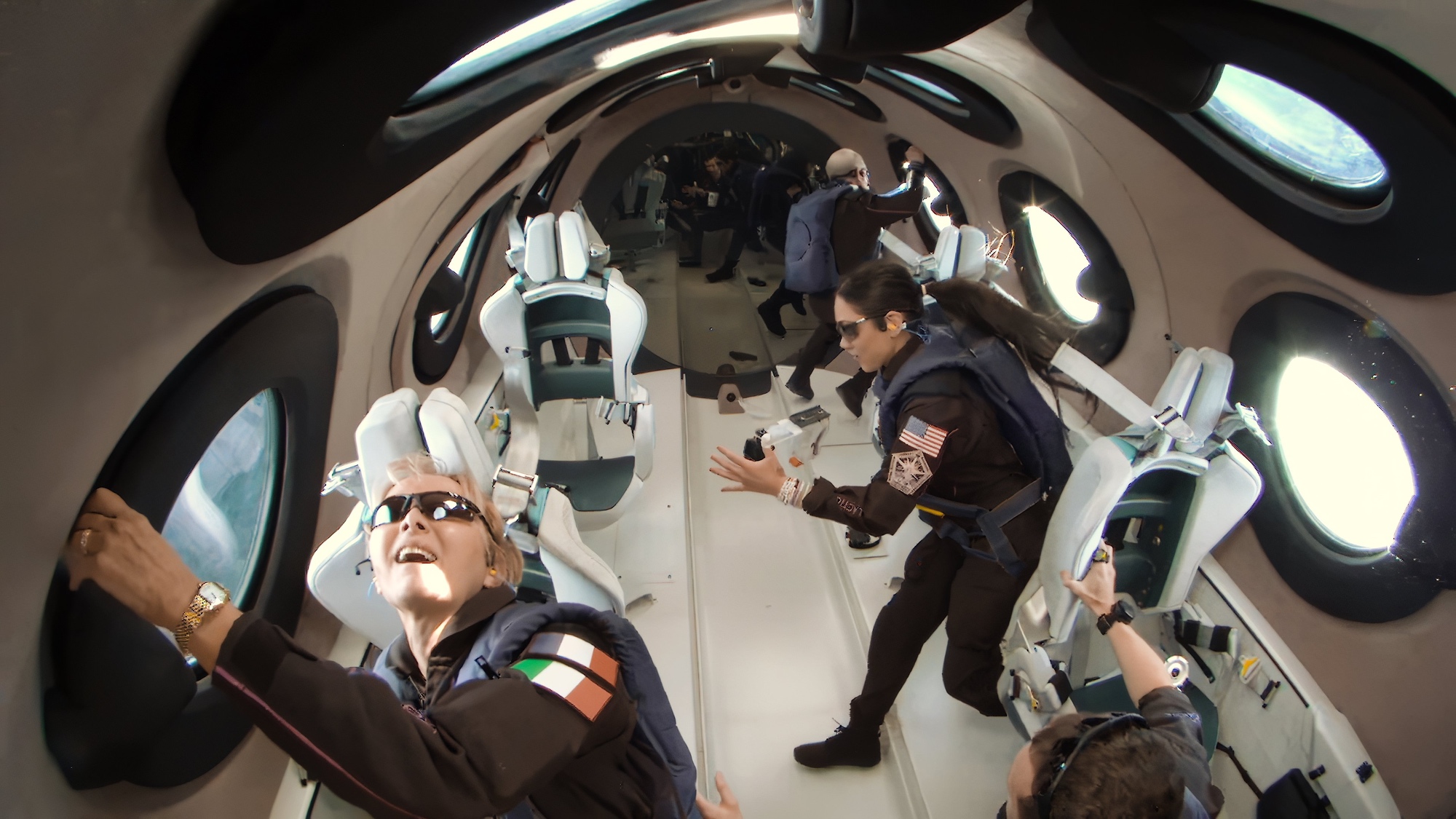
WASHINGTON — Virgin Galactic completed its sixth and final suborbital spaceflight of the year Nov. 2, flying two researchers and a private astronaut.
The company’s VSS Unity spaceplane took off from New Mexico’s Spaceport America at 9 a.m. Eastern, attached to the VMS Eve mothership aircraft. Unity separated at about 9:45 a.m. Eastern, igniting its hybrid rocket motor to fly to a peak altitude of approximately 87.2 kilometers and top speed of Mach 2.96. Unity glided back to a runway landing at Spaceport America nearly an hour after takeoff.
The flight, designated Galactic 05 by the company, was its fifth commercial spaceflight since late June, and the sixth overall this year when including a company test flight in May. On board were two researchers, Kellie Gerardi and Alan Stern, and a space tourist, Ketty Pucci-Sisti Maisonrouge.
Stern, vice president at the Southwest Research Institute (SwRI) and a longtime advocate for suborbital research, flew on Galactic 05 primarily as a training mission for a future NASA-funded research mission on VSS Unity. He tested a biomedical harness and a mockup of a camera.
Gerardi flew on Galactic 05 sponsored by the International Institute for Astronautical Sciences (IIAS). She conducted three experiments in fluid dynamics and biomedical research that had been tested previously on parabolic flights operated by the National Research Council of Canada.
In an interview after the flight, both said they were able to complete their experiments during the few minutes of microgravity on the flight. Gerardi, who said she has flown on hundreds of parabolic aircraft flights that provide much shorter durations of weightless, said she was “pleasantly surprised” by the quality of the microgravity on Unity.
Stern, in an article he wrote before the flight, provided a detailed timeline of what he planned to do in those three minutes. “I got everything done,” he said afterwards, although a couple minor issues caused him to fall behind that timeline at points. “It was kind of a wavy line around the straight line of the script.”
The experience, he said, was valuable for him for his future suborbital research flight, and he believed other researchers would benefit from training flights. “Funding people to go on training flights is risk reduction,” he said. “Your batting average is going to be way higher on flight two versus flight one.”
Gerardi said she learned a lot from both the flight itself and planning for it, such as optimizing procedures and experiment designs. IIAS is working to arrange another flight with Virgin Galactic.
There were a few moments for the two researchers to enjoy the flight. “I was so task-oriented on my science payload that it wasn’t until the payload was secure that I was able to look out the window,” Gerardi recalled, and was stunned by the view. “You could see the Earth as a planet. It was really profound.”
The third customer on the flight, Maisonrouge, was an early “Founder” customer of Virgin Galactic who, according to a company biography, was fascinated with space since watching the Apollo landings as a child. As with other recent Virgin Galactic flights, the company disclosed her identity only after landing.
Unity was commanded by Mike Masucci with Kelly Latimer as pilot and astronaut trainer Colin Bennett in the cabin. Virgin Galactic previously said that, starting with Galactic 06, it will not fly an astronaut trainer, freeing up that seat for a fourth customer.
That next flight will take place in January, the company confirmed, after an annual maintenance period for the vehicles. Virgin Galactic will release its third quarter financial results after the markets close Nov. 8.
Related
ncG1vNJzZmiroJawprrEsKpnm5%2BifLe10aCgp2WXlrmir9Oimmabkae%2FqrHSZqmeq5WWv6S0xKuqZqeeYrOqstOhZJynnaKys6%2FImqNmq6WXvLOuyK2YpWWWobaotNNo